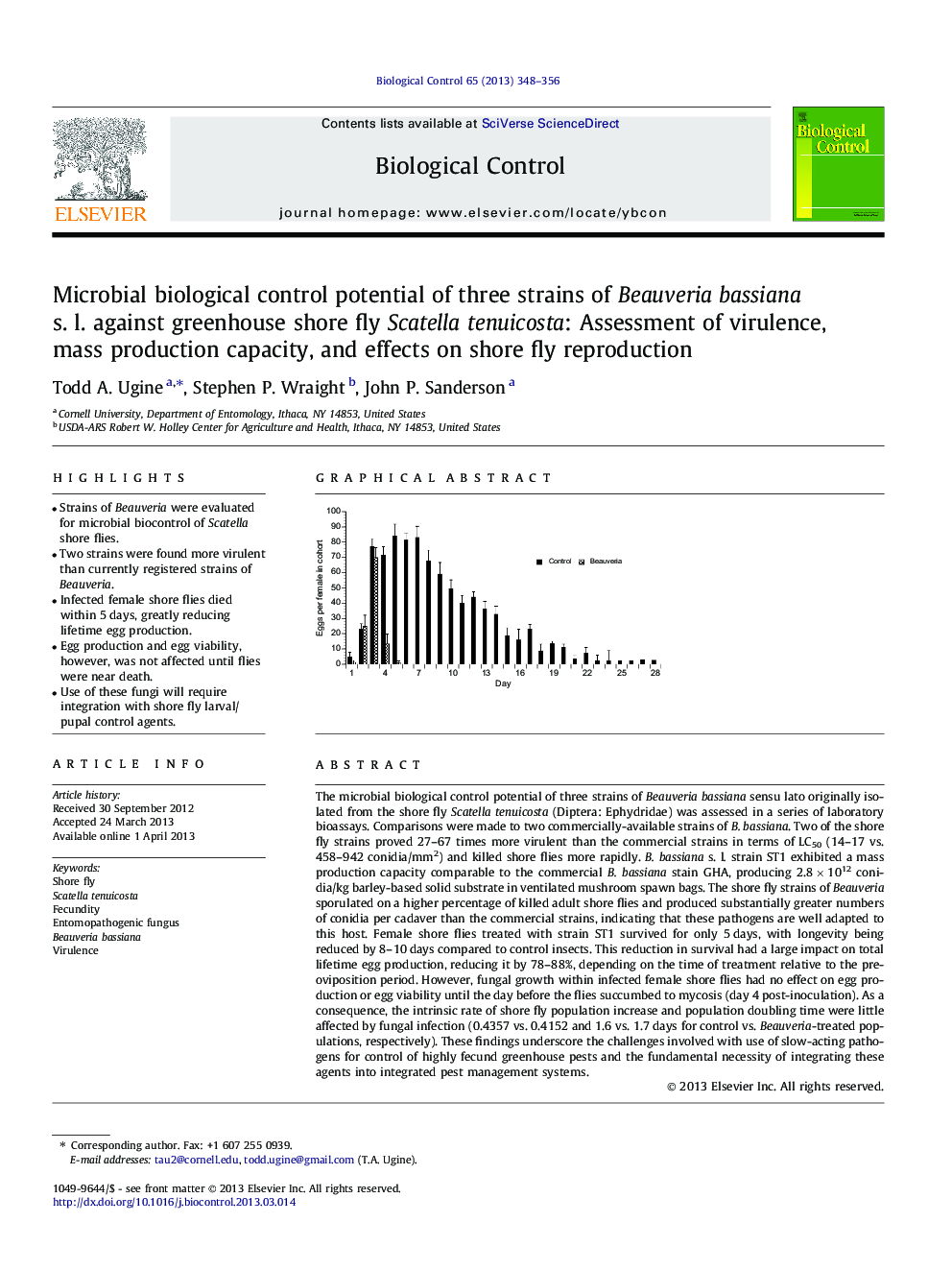| کد مقاله | کد نشریه | سال انتشار | مقاله انگلیسی | نسخه تمام متن |
|---|---|---|---|---|
| 4504031 | 1321053 | 2013 | 9 صفحه PDF | دانلود رایگان |

• Strains of Beauveria were evaluated for microbial biocontrol of Scatella shore flies.
• Two strains were found more virulent than currently registered strains of Beauveria.
• Infected female shore flies died within 5 days, greatly reducing lifetime egg production.
• Egg production and egg viability, however, was not affected until flies were near death.
• Use of these fungi will require integration with shore fly larval/pupal control agents.
The microbial biological control potential of three strains of Beauveria bassiana sensu lato originally isolated from the shore fly Scatella tenuicosta (Diptera: Ephydridae) was assessed in a series of laboratory bioassays. Comparisons were made to two commercially-available strains of B. bassiana. Two of the shore fly strains proved 27–67 times more virulent than the commercial strains in terms of LC50 (14–17 vs. 458–942 conidia/mm2) and killed shore flies more rapidly. B. bassiana s. l. strain ST1 exhibited a mass production capacity comparable to the commercial B. bassiana stain GHA, producing 2.8 × 1012 conidia/kg barley-based solid substrate in ventilated mushroom spawn bags. The shore fly strains of Beauveria sporulated on a higher percentage of killed adult shore flies and produced substantially greater numbers of conidia per cadaver than the commercial strains, indicating that these pathogens are well adapted to this host. Female shore flies treated with strain ST1 survived for only 5 days, with longevity being reduced by 8–10 days compared to control insects. This reduction in survival had a large impact on total lifetime egg production, reducing it by 78–88%, depending on the time of treatment relative to the pre-oviposition period. However, fungal growth within infected female shore flies had no effect on egg production or egg viability until the day before the flies succumbed to mycosis (day 4 post-inoculation). As a consequence, the intrinsic rate of shore fly population increase and population doubling time were little affected by fungal infection (0.4357 vs. 0.4152 and 1.6 vs. 1.7 days for control vs. Beauveria-treated populations, respectively). These findings underscore the challenges involved with use of slow-acting pathogens for control of highly fecund greenhouse pests and the fundamental necessity of integrating these agents into integrated pest management systems.
Figure optionsDownload as PowerPoint slide
Journal: Biological Control - Volume 65, Issue 3, June 2013, Pages 348–356